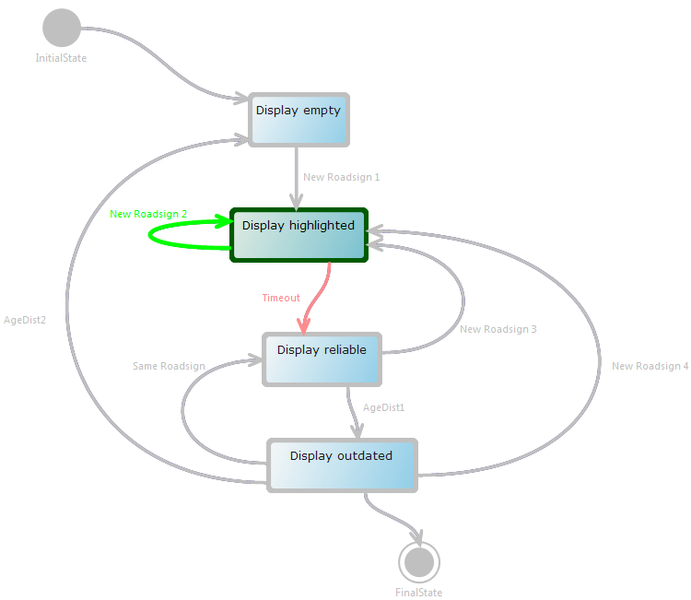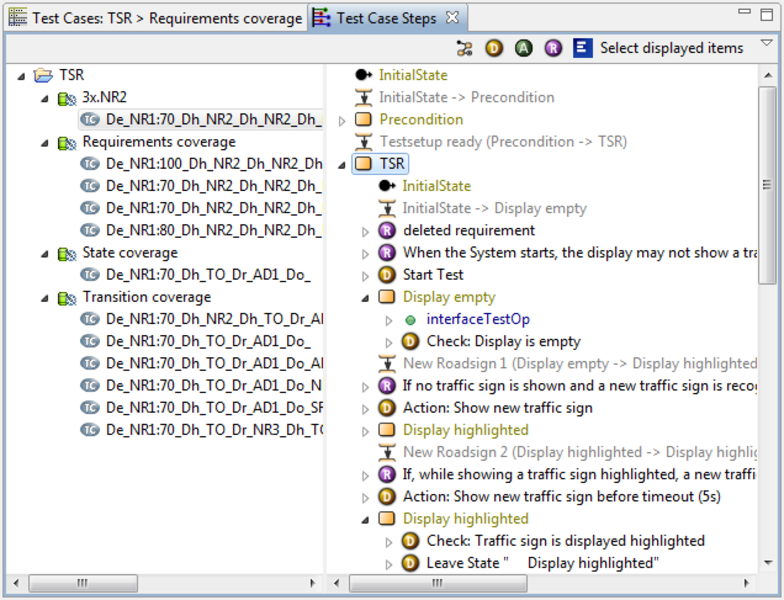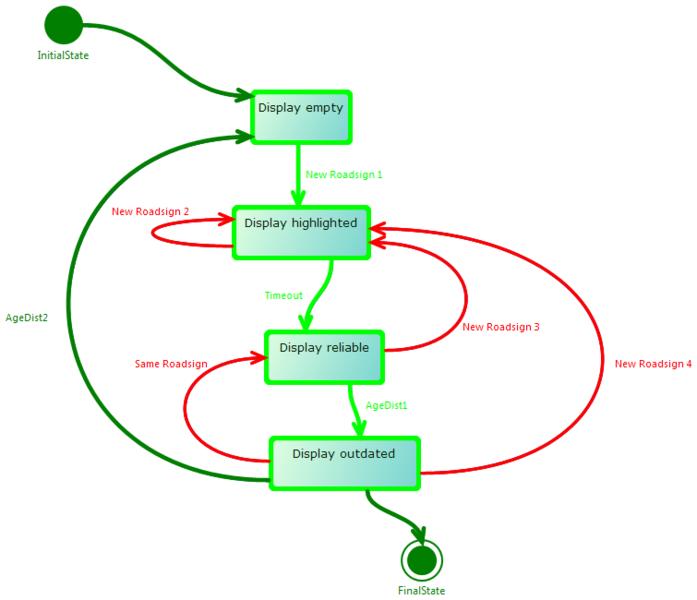After the modelling and definition of test objectives, test cases can be generated and displayed in the test case generation. The generation of executable test scenarios takes place directly from MODICA. To do this, the user defines sequence rules with which he can influence the generation process in terms of test content and scope of testing. The very powerful and deterministic test case generator from the Company Conformiq is used for the generation itself.
VISUALISATION
Several views are available for the test case generation in MODICA in order to meet the different approaches. For example, the exact process of a test case can be viewed directly in the model. In this way, covered and uncovered elements are revealed at a glance. In a special list view, detailed information is displayed for each test case. This includes the test case description, the main objectives or the cover statistics. An overview of all generated test cases is offered by a further view and for each test case the single steps are visualized through the diagram in a tree. Through user specific filtering, only relevant information can be displayed and enables a compact view of the test case.
COVERAGE ANALYSIS
1. TEST REPORT
Next to the defined test objectives, the actual test coverage can be displayed in MODICA after generating the test cases. This design makes it possible to prove for every generating strategy which test objective, how often and in which test case has been covered. In addition, the per cent coverage is given with respect to a test objective and to the overall generation strategy.
2. STEPPING
In order to understand the exact process of a test case in the model, MODICA allows a step-by-step “stepping” trough the test case. A meaningful colouring and an intuitive navigation with the arrow keys leads to a clear analysis and facilitates the understanding of the complex cases for the user.

3. COVERAGE HIGHLIGHTS
The coverage-highlighting-function allows conclusions to the focus of a test case or the entire test suite. In graded green tones, the frequency of the passed elements can be seen in relation to other elements. The more rarely an element has been passed through, the darker the green becomes. If an element is not covered, it appears red coloured.


